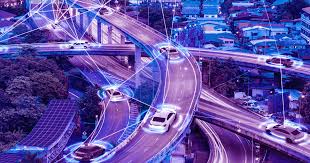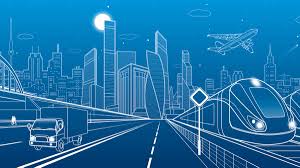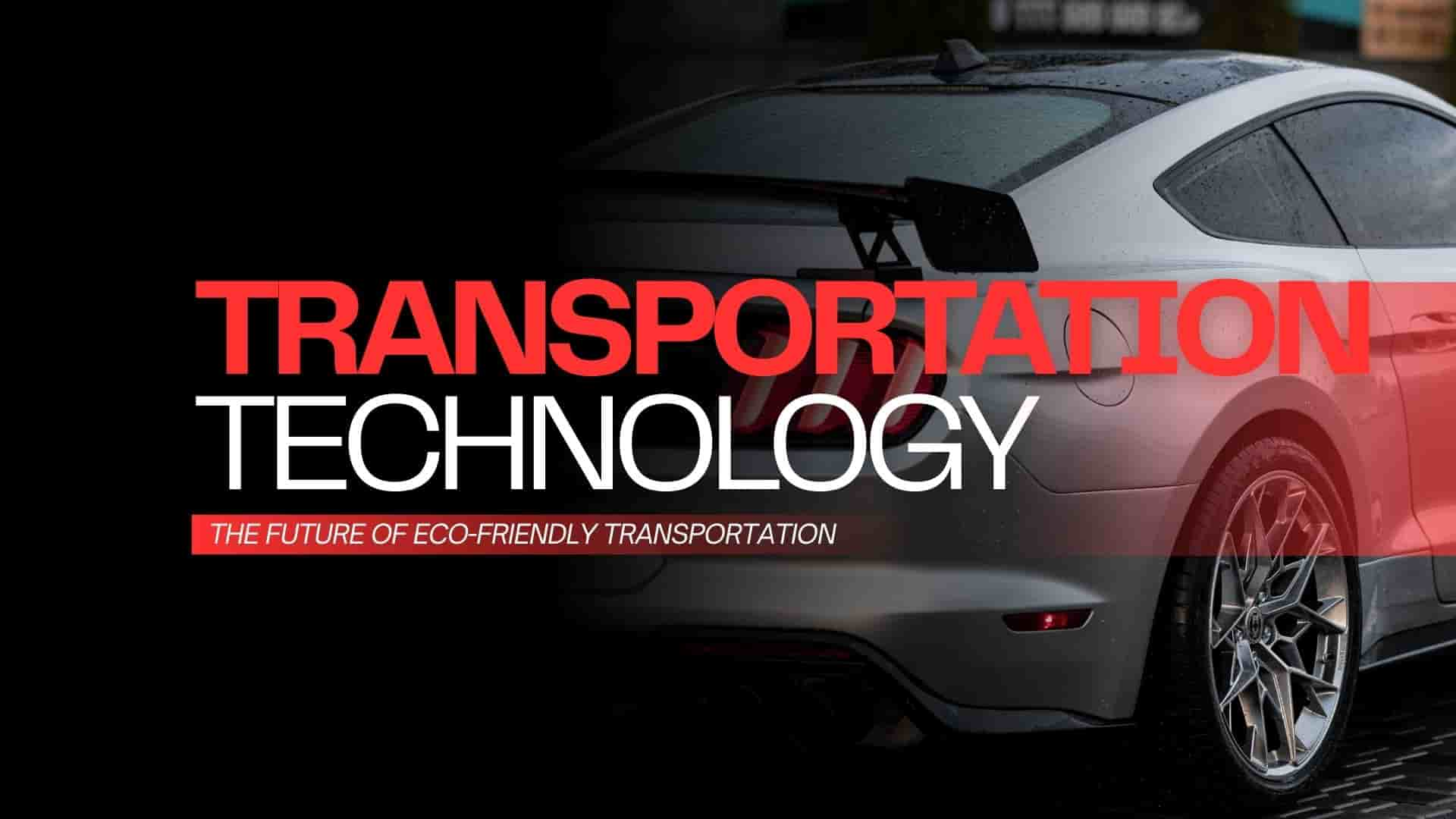Beyond the Horse and Buggy
Remember the last time you were stuck in traffic? Cursing the red light, inching forward, watching your precious minutes evaporate into exhaust fumes? Now, imagine that same commute in a silent, self-driving car where you can catch up on work, watch a show, or even take a nap while the vehicle navigates the congestion with AI-powered precision. This isn’t a distant dream—it’s the imminent reality being built by revolutionary transportation technology.
The global smart transportation market is accelerating toward a staggering $285.12 billion by 2028, fueled by a compound annual growth rate of over 12%. But this revolution is about far more than just avoiding traffic jams. From the electric vehicles (EVs) silently zipping through our neighborhoods to the hyperloop prototypes promising to shoot pods at airline speeds through low-pressure tubes, transportation technology is fundamentally reshaping how we connect with our world. It’s tackling grand challenges: slashing carbon emissions, boosting safety, and reimagining mobility for everyone, from toddlers to seniors. So, fasten your seatbelt (for now), and let’s take a joyride through the past, present, and mind-bending future of how we get from A to B.
What is Transportation Technology?
In simple terms, transportation technology is the application of science, engineering, and digital innovation to improve the way people and goods are moved from one place to another. It’s not just about making vehicles faster or flashier; it’s about making entire transportation systems smarter, safer, cleaner, and more efficient.
This field has evolved in massive leaps. We’ve gone from the invention of the wheel to the steam engine, which ignited the first transportation revolution. The internal combustion engine then put the world on wheels. Now, we’re in the midst of a fourth revolution, defined by electrification, connectivity, autonomy, and sharing. Modern transportation technology is a fusion of mechanical engineering with cutting-edge artificial intelligence, Internet of Things (IoT) sensors, and big data analytics, all working in concert to transform our mobility.
The Electric Revolution on Wheels
The most visible and audible (or rather, inaudible) sign of change on our roads is the rapid rise of the electric vehicle. EVs are more than just cars without tailpipes; they are sophisticated computers on wheels.
⚡ Beyond the Battery
While the battery is the heart of an EV, the real magic is in its overall design. EVs use regenerative braking to recapture energy, advanced thermal management systems to optimize battery life, and increasingly sophisticated software that can receive over-the-air updates to improve performance, add features, and enhance safety long after the car has left the dealership. This turns the vehicle from a static purchase into a platform that continuously evolves.
🚌 Electrifying Everything
The shift to electricity isn’t just for passenger cars. The transportation technology revolution includes:
- E-buses: Quiet, zero-emission buses are transforming public transit in cities from London to Santiago.
- E-trucks: Companies like Tesla, Volvo, and Rivian are developing heavy-duty trucks to decarbonize the freight industry, which is a major contributor to emissions.
- Micro-mobility: E-scooters and e-bikes have exploded in popularity, offering a convenient and fun solution for short “last-mile” trips that connect people from transit hubs to their final destinations.
Read more: How Space Technology is Revolutionizing Life- Best 2025
The Road to Self-Driving Cars
Autonomous vehicles (AVs) represent the ultimate convergence of transportation technology. They layer various technologies to perceive their environment and make decisions without human input.
👁️ The Sensors That See Everything
AVs use a suite of sensors to create a 360-degree, redundant view of the world:
- LiDAR: Uses laser pulses to create a high-resolution 3D map of the surroundings.
- Radar: Sees through fog, rain, and snow to track the speed and distance of objects.
- Cameras: Read road signs, detect traffic lights, and identify pedestrians.
This sensor fusion, processed by powerful onboard computers, allows the car to “see” better than any human driver could.
🧠 The AI Brain
The data from these sensors is meaningless without intelligence. This is where sophisticated machine learning algorithms and artificial intelligence come in Transportation Technology. The AI is trained on millions of miles of driving data to learn how to recognize patterns, predict the behavior of other road users, and make split-second decisions that prioritize safety. The Society of Automotive Engineers (SAE) defines levels of driving automation from Level 0 (no automation) to Level 5 (full automation in all conditions), with most current testing happening at Levels 2 and 3.

Taking to the Skies: Urban Air Mobility
For those dreaming of flying cars, the future is getting closer—but they’ll likely be electric, autonomous drones first. Urban Air Mobility (UAM) refers to a system of small, electric vertical takeoff and landing (eVTOL) aircraft that will shuttle people and cargo across cities, bypassing traffic entirely.
Companies like Joby Aviation, Archer, and Volocopter are developing these aircraft, which sound more like a loud drone than a helicopter. The vision is for a network of “vertiports” on rooftops and unused urban land, allowing for quick aerial ridesharing. While regulatory and noise challenges remain, UAM promises to add a thrilling third dimension to urban transportation technology.
The Hyperloop & High-Speed Rail
For longer distances between cities, the future is about speed and efficiency. Two technologies are leading the charge:
🚄 High-Speed Rail 2.0
Countries like Japan (with its Shinkansen) and China have led the first wave of high-speed rail. The next wave involves even faster maglev (magnetic levitation) trains, like the one in Shanghai, which uses powerful magnets to lift the train off the track, eliminating friction and allowing for incredible speeds over 600 km/h.
💨 The Hyperloop Vision
Pioneered by Elon Musk and now being developed by companies like Virgin Hyperloop, this concept takes maglev a step further. The idea is to propel passenger pods through a near-vacuum tube at speeds exceeding 1,000 km/h. With no air resistance or friction, hyperloop technology could theoretically transport people from Los Angeles to San Francisco in under 45 minutes, revolutionizing long-distance travel.
Read more: Timeline of transportation technology
Smart Infrastructure: The Digital Nervous System for Transportation Technology
The vehicles themselves are only half the story. The true potential of transportation technology is unlocked by smart infrastructure—a digital layer over our physical roads, rails, and airways.
- Intelligent Traffic Management: AI-powered systems that analyze real-time traffic flow from cameras and sensors to dynamically control traffic lights, reducing congestion and improving commute times.
- Vehicle-to-Everything (V2X) Communication: This technology allows vehicles to talk to each other (V2V), to traffic signals (V2I), to pedestrians’ smartphones (V2P), and to the network (V2N). This enables warnings about hazards ahead, even if they’re around a corner and out of sight.
- Smart Highways: Roads embedded with sensors that can monitor their own condition, generate solar power, or even wirelessly charge EVs as they drive.
Table: The Evolution of Transportation Technology
| Era | Key Technology | Defining Vehicle | Core Limitation |
|---|---|---|---|
| 1st Revolution | Steam Power | Steam Locomotive | Fixed Tracks, Slow |
| 2nd Revolution | Internal Combustion Engine | Automobile | Fossil Fuels, Emissions |
| 3rd Revolution | Jet Engine, Containerization | Airplane, Cargo Ship | Congestion, Cost |
| 4th Revolution | AI, Electrification, Connectivity | Autonomous EV, eVTOL | Regulation, Infrastructure |
Benefits: Why This Tech Matters
The shift to advanced transportation technology isn’t just for cool factor; it promises profound benefits for society.
- Enhanced Safety: Over 90% of accidents are caused by human error. Autonomous driving systems that never get tired, distracted, or drunk could dramatically reduce crashes, saving millions of lives.
- Environmental Sustainability: Electrifying transport is crucial for hitting climate goals. When paired with a clean energy grid, EVs and eVTOLs can slash greenhouse gas emissions and improve urban air quality.
- Efficiency and Accessibility: Transportation technology can reduce crippling congestion, which costs economies billions. It also promises new mobility options for the elderly and those unable to drive, granting them greater independence.
- Economic Growth: This revolution is spawning entirely new industries, from AV software development to battery manufacturing and urban air traffic control, creating new high-skilled jobs.
Hurdles on the Road Ahead for Transportation Technology
Despite the exciting potential, the path forward is filled with challenges:
- Cost and Infrastructure: The upfront cost of developing these technologies is astronomical. Furthermore, deploying them requires a massive overhaul of our infrastructure, from installing EV charging stations everywhere to building vertiports and hyperloop tubes.
- Regulation and Liability: Governments are struggling to keep pace with innovation. Creating safety standards, traffic laws for AVs and eVTOLs, and determining liability in the event of an autonomous vehicle crash are complex legal and ethical dilemmas.
- Public Acceptance and Cybersecurity: Convincing people to trust a machine with their lives is a huge hurdle. Furthermore, a connected transportation system is a potential target for cyberattacks, requiring robust security to prevent catastrophic breaches.
- The Ethical Algorithm: How should an autonomous vehicle’s AI be programmed to act in a no-win scenario? These “trolley problem” ethical questions, while rare, need thoughtful societal discussion.

Conclusion: The Journey Ahead
The revolution in transportation technology is not a single invention but a converging wave of innovations—in electrification, automation, connectivity, and design—that promise to reshape our world as profoundly as the automobile did over a century ago. This journey is about more than just faster cars or fancier gadgets; it’s about building a transportation system that is safer, cleaner, more efficient, and more accessible for everyone.
While significant hurdles around cost, regulation, and social acceptance remain, the direction of travel is clear. The choices we make today about investment, policy, and design will determine whether this new era of mobility reduces inequality and environmental damage or exacerbates it. The road ahead is long, but the destination—a smarter, more sustainable way to move—is undoubtedly worth the trip.
Read more: Transportation Technology: Definition & Examples
Frequently Asked Questions
What is the future of transportation technology?
The future is electric, automated, and connected. We’re moving toward a seamless system where electric, self-driving vehicles communicate with each other and smart infrastructure, complemented by urban air mobility options for shorter flights, reducing congestion and emissions.
How will self-driving cars change society?
Autonomous vehicles could drastically reduce accidents caused by human error, reshape urban planning by reducing the need for parking, provide new mobility for the elderly and disabled, and change ownership models toward widespread ride-sharing.
Are electric cars really better for the environment?
Yes, but with a caveat. While they produce zero tailpipe emissions, their overall environmental impact depends on how the electricity that charges them is generated. On a clean energy grid, their lifetime emissions are significantly lower than gasoline cars.
What is the biggest challenge for electric vehicles?
The two largest hurdles are charging infrastructure—building a convenient, ubiquitous network of fast chargers—and battery technology—continuing to improve energy density for longer range, reduce charging times, and lower costs.
When will flying cars be available?
Prototypes exist, but widespread adoption is likely a decade away. Key challenges include developing robust regulations from aviation authorities, ensuring safety and quiet operation in cities, and building the necessary infrastructure like vertiports.

